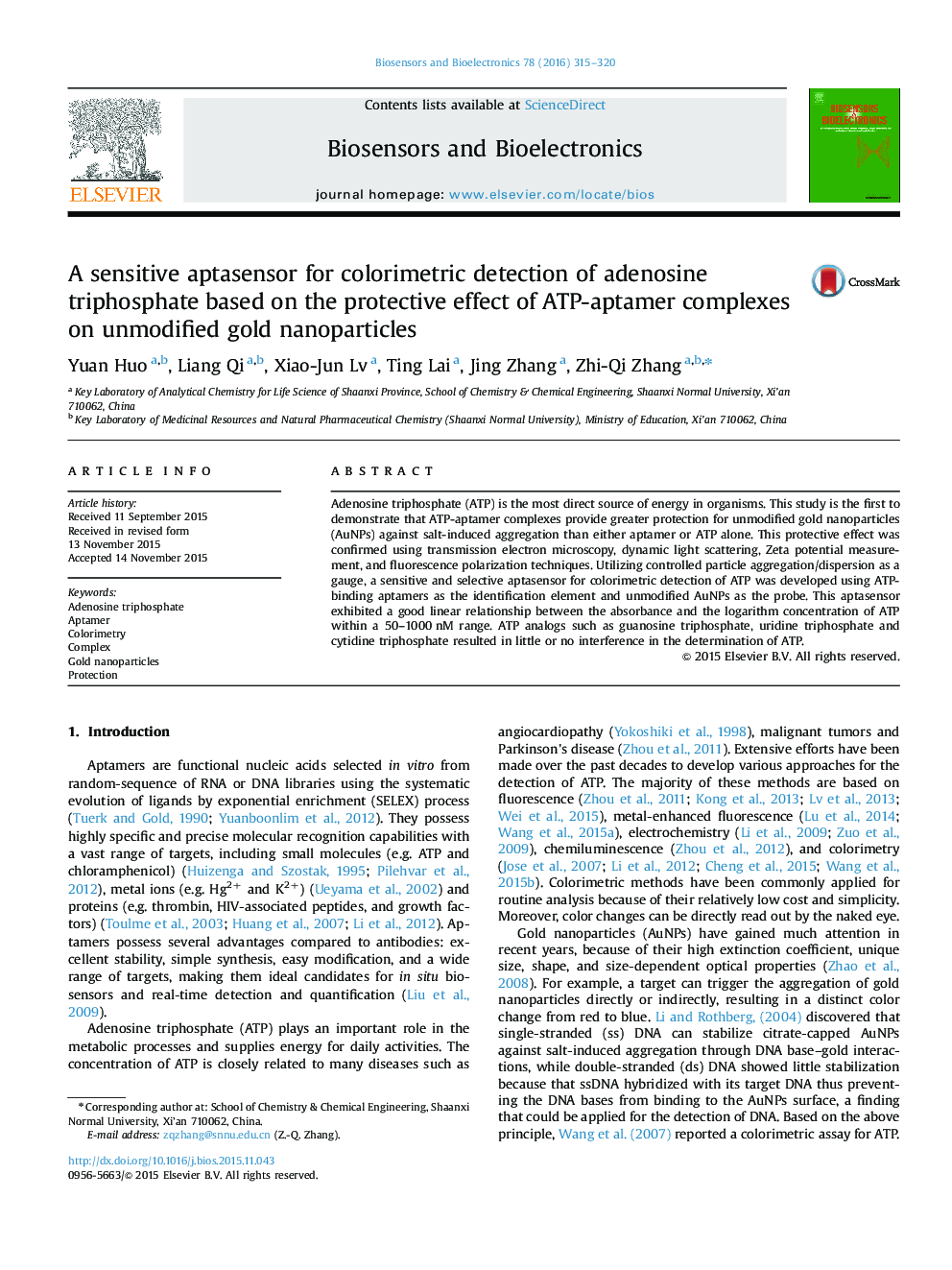| Article ID | Journal | Published Year | Pages | File Type |
|---|---|---|---|---|
| 7230998 | Biosensors and Bioelectronics | 2016 | 6 Pages |
Abstract
Adenosine triphosphate (ATP) is the most direct source of energy in organisms. This study is the first to demonstrate that ATP-aptamer complexes provide greater protection for unmodified gold nanoparticles (AuNPs) against salt-induced aggregation than either aptamer or ATP alone. This protective effect was confirmed using transmission electron microscopy, dynamic light scattering, Zeta potential measurement, and fluorescence polarization techniques. Utilizing controlled particle aggregation/dispersion as a gauge, a sensitive and selective aptasensor for colorimetric detection of ATP was developed using ATP-binding aptamers as the identification element and unmodified AuNPs as the probe. This aptasensor exhibited a good linear relationship between the absorbance and the logarithm concentration of ATP within a 50-1000Â nM range. ATP analogs such as guanosine triphosphate, uridine triphosphate and cytidine triphosphate resulted in little or no interference in the determination of ATP.
Related Topics
Physical Sciences and Engineering
Chemistry
Analytical Chemistry
Authors
Yuan Huo, Liang Qi, Xiao-Jun Lv, Ting Lai, Jing Zhang, Zhi-Qi Zhang,
